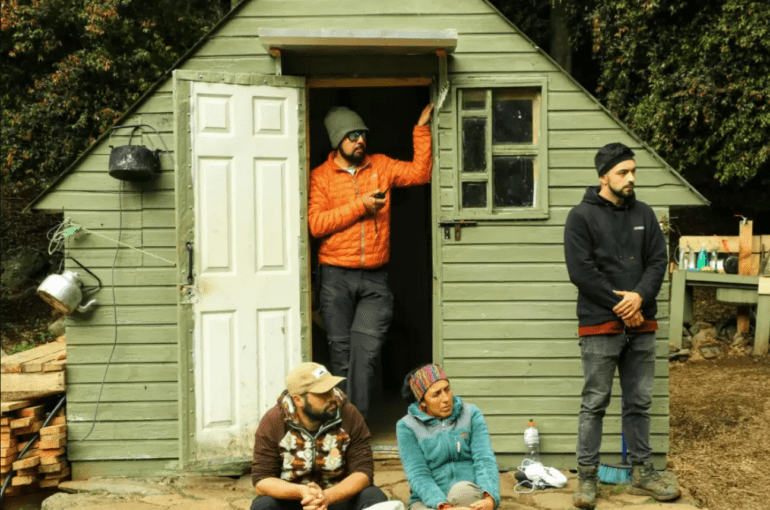- Island Conservation collaborates with Lenovo and NVIDIA to combat invasive species that threaten island ecosystems.
- Lenovo’s ThinkEdge SE450, equipped with NVIDIA® A40 GPUs, enhances image processing and classification capabilities.
- The partnership enables rapid detection of invasive species, such as coatis, on Robinson Crusoe Island.
- AI-powered solutions significantly reduce processing time, accelerating conservation efforts and protecting native wildlife.
- Island Conservation plans to expand AI capabilities to detect other invasive species and enhance biodiversity conservation across various island ecosystems.
Main AI News:
In the contemporary environmental landscape, the preservation of biodiversity stands as a paramount concern. Experts widely recognize the current era as the sixth mass extinction, with hundreds of plant and animal species lost forever over the last century.
Island environments, in particular, face acute vulnerability to human-induced pressures. For instance, Robinson Crusoe Island in the South Pacific Ocean grapples with the threat posed by invasive species such as the South American coati, which prey on native seabirds like the pink-footed shearwater. Originally introduced by humans nearly a century ago, coatis, akin to housecat-sized mammals in the raccoon family, pose a significant risk to the island’s delicate ecosystem by hunting shearwaters at their nesting sites.
Championing the cause of island ecosystem protection is Island Conservation, a global non-profit organization dedicated to restoring island habitats for the betterment of wildlife, oceans, and communities. Working in tandem with local residents, Island Conservation has long been at the forefront of safeguarding endangered and threatened species.
However, combating invasive species like coatis entails multifaceted challenges. Beyond mere physical removal efforts, the organization grapples with the need to effectively monitor and analyze wildlife activity, particularly at shearwater nesting sites. Traditionally, this task relied heavily on manual processes, consuming substantial time and resources.
Recognizing the imperative for innovation, Island Conservation embarked on a journey to leverage machine learning (ML) models to expedite image processing. Yet, connectivity constraints on Robinson Crusoe Island posed a significant hurdle, rendering cloud-based solutions impractical.
In a bid to surmount these obstacles, Lenovo emerged as a strategic partner. Backed by the Lenovo Work for Humankind initiative, a dedicated team of global volunteers descended upon the island, equipped with state-of-the-art technology aimed at bolstering its networking infrastructure. Leveraging Lenovo’s ThinkEdge SE450, powered by NVIDIA® A40 GPUs, Island Conservation overcame connectivity limitations while ensuring robust, AI-optimized processing capabilities in remote environments.
The deployment of Lenovo’s edge computing solution revolutionized the image processing workflow, enabling rapid detection and classification of invasive species with unprecedented efficiency. Through a meticulously crafted AI pipeline, trained data scientists achieved remarkable time savings, processing thousands of camera trap images in a fraction of the previous labor-intensive timelines. With a newfound ability to swiftly identify coati activity, Island Conservation could promptly respond to potential threats, safeguarding vulnerable bird populations from predation.
Moreover, Lenovo’s collaborative approach extended beyond technological innovation, facilitating seamless integration with existing conservation workflows. By tailoring solutions to suit the organization’s specific needs, Lenovo empowered Island Conservation to harness the full potential of automation in its mission to protect native species.
Looking ahead, Island Conservation envisions a continued partnership with Lenovo to expand its AI capabilities, addressing evolving conservation challenges on Robinson Crusoe Island and beyond. With plans to deploy additional ThinkEdge SE450 devices across diverse island ecosystems, Island Conservation remains poised to confront emerging threats and drive meaningful conservation outcomes.
Conclusion:
The collaboration between Island Conservation, Lenovo, and NVIDIA signifies a significant advancement in leveraging technology for conservation efforts. By harnessing AI and edge computing solutions, the partnership demonstrates the potential to revolutionize ecosystem restoration initiatives. This innovative approach not only enhances the efficiency of wildlife monitoring and protection but also sets a precedent for future collaborations in addressing environmental challenges. As technology continues to intersect with conservation efforts, businesses in the environmental sector may find opportunities to leverage advanced solutions to drive meaningful impact and sustainability in the market.

